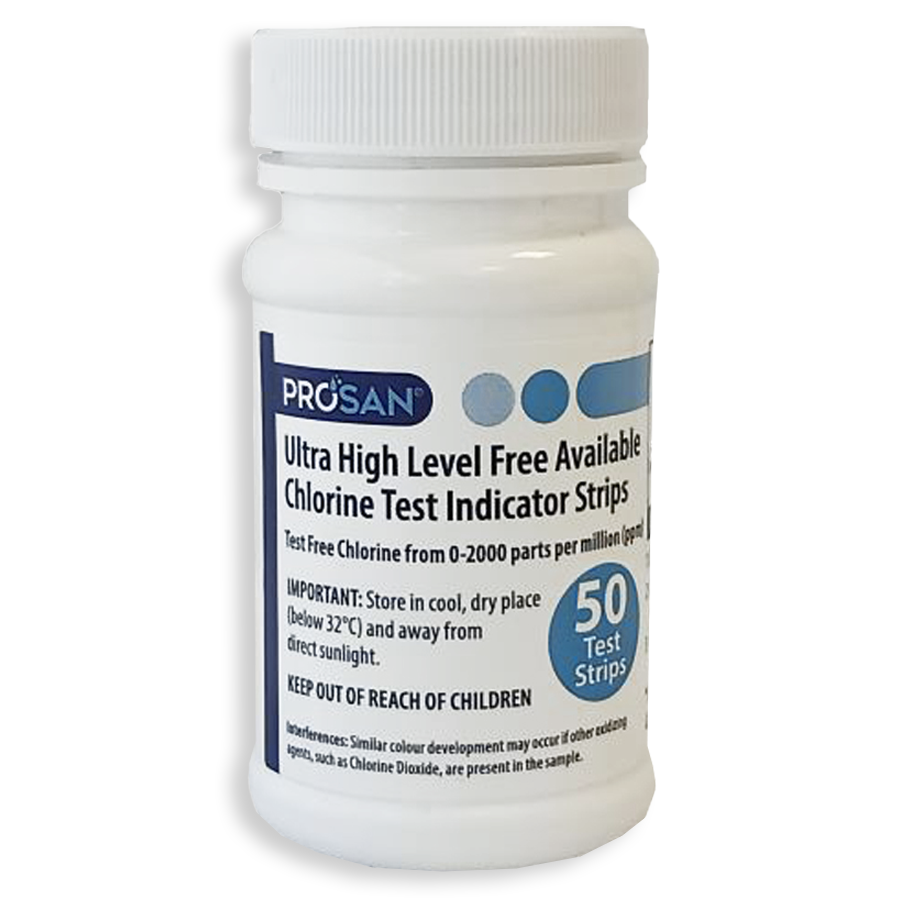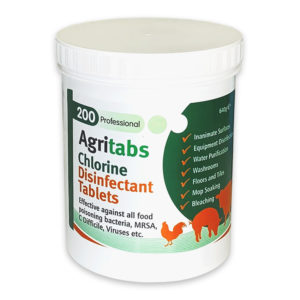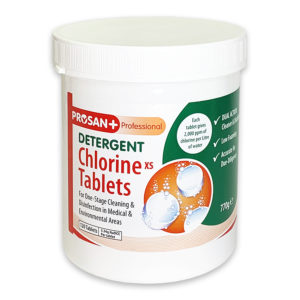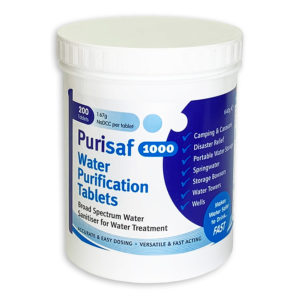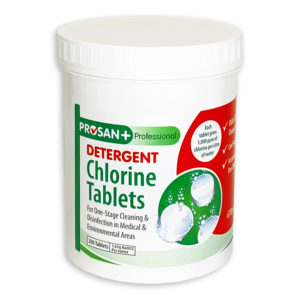Description
Chlorination Tablets (Chlorine Tablets) – 1.67g NaDCC
These chlorination tablet (abbrev ECTs) products are referred to under different names but they are all the same active ingredient known as sodium dichloroisocyanurate (Trolosene sodium, NaDCC) and often referred to as:
- Chlorine tablets
- Chlorination Tablets
- Hypochlorite Tablets
- Bleach Tablets
- Cyanuric Acid Tablets
Some “Brand” names you may be familiar with are Actichlor, Sanichlor, Haz Tab, Biospot, Klorsept & Chlorclean.
Maclin Produce under Branded & Own Label for Distributors all over the World
Used for a variety of disinfection tasks in Hospital, Food use, Care, Nursing, Medical and many more applications.
- Easy to calculate precise dosing requirement and excellent for due diligence applications:
1 tablet in 1 Litre = 1,000 parts per million available chlorine
1 tablet in 5 Litres = 200 parts per million available chlorine
- Fast Dissolving – tablets are effervescent. TOP TIP: Pre-dissolve in a little warm water to speed up dissolution time
- 200 per tamper evident tub, packed 6 per case.
- 18mm diameter allows tablet to fit into a standard trigger spray
USES AND EFFECTIVENESS – 3.2g Effervescent Chlorination Tablets (1.67g NaDCC, 1,000 ppm/L) PRODUCT APPLICATIONS:
Typical Uses in Private & Public Health areas:
- Non metallic medical and veterinary appliances
- Mops, cloths and glassware
- General disinfection
- Body fluid spills
- Drains, sinks, W.C. pans, W.C.’s
- Laboratory discard jars
- Conditions of heavy soiling
- Veterinary hygiene:
- General hygiene
- Conditions of heavy soiling
- Food and feed disinfectants:
- Food preparation areas; non metallic equipment, containers, consumption utensils, work surfaces, stainless steel (catering grade)
- Baby bottle sterilisation
- Drinking water disinfection:
- Chlorination of animals drinking water
- Emergency water purification
Water Supply Hygiene Guidelines
Typical Uses and dilutions:
| DILUTION TABLE 3.2g Chlorination Tablets (1.67g NaDCC) | ||
| 1 TABLET IN | GIVES AVAILABLE CHLORINATION OF | TYPICAL USES |
| 100ml | 10,000 ppm | Body fluid spills & conditions of heavy soiling |
| 400ml | 2,500 ppm | Non metallic medical & veterinary appliances & laboratory discard jars |
| 1 litre | 1000 ppm | General disinfection |
| 2.5 litres | 400 ppm | WC’s, drains, sinks |
| 5 litres | 200 ppm | Food preparation areas |
| 8 litres | 125 ppm | Baby bottle sterilisation |
| 10 litres | 100 ppm | Cloths & mops |
Guidelines for the use of 3.2g ECT for glassware, mops and cloths: After cleaning mops or cloths, dissolve 1 tablet in the recommended amount of water to produce 100 ppm of available chlorine. Immerse the cloth or mop in the solution for at least 30 minutes. Do not leave overnight. Guidelines for the use of 3.2g ECT for food preparation surfaces and food processing equipment: Remove loose debris with a clean, loosely-folded cloth. Wash with a hot neutral detergent solution and cloth. An abrasive nylon pad may also be useful. Rinse with hot water and a clean cloth. Drop one 3.2g ECT into the recommended amount of water, preferably warm (40°C) to provide 200 ppm of available chlorine. (Warm water assists the process of disinfection and also speeds up the tablet dissolution time.) Thoroughly wet the cleaned surface with the disinfecting solution by the most suitable means, e.g. trigger spray or disposable cloth. Leave wet for a minimum of 3 minutes. (Providing the surface is thoroughly clean this is sufficient contact time for positive disinfection.) Rinse off with fresh, clean water. Allow to air-dry or use disposable paper towel. IN THE CASE OF DANGEROUS OR ELECTRICAL EQUIPMENT (E.G. SLICING MACHINES), PRELIMINARY SAFETY PROCEDURES AND FINAL SAFETY CHECKS WILL BE REQUIRED, SEVERAL TYPES OF EQUIPMENT WILL NEED PARTIAL OR COMPLETE DISMANTLING TO ENSURE EFFECTIVE CLEANING AND DISINFECTION. WARNING: TO BE EFFECTIVE, DISINFECTANT SOLUTIONS MUST BE MADE UP FRESH EACH DAY AND BE OF CORRECT CONCENTRATION.
Instructions for the use of Tablets in Hospitals:
| 3.2g (1.67g NaDCC) Effervescent Chlorine Tablets–Typical Hospital Usage | |||
| 1 Tablet in: | Gives Available Chlorine of: | Task: | Method: |
| 100 ml | 10,000 ppm | Body Fluid Spills | Leave for 2 Mins |
| 400 ml | 2,500 ppm | Laboratory Discard Jars | Soak Overnight |
| 1 Litres | 1,000 ppm | General Disinfection(High Risk Areas) | 15 Min Contact Time |
| 2.5 Litres | 400 ppm | Drains, W.C’s, Sinks etc | Pour in at quiet times |
| 8 Litres | 125 ppm | Baby Bottles Sterilising | Min 30 Mins |
| 10 Litres | 100 ppm | Cloths Mops etc | 30 Minutes. Do not leave overnight |
FOGGING: If you are using tablets to create a HOCl solution, 1 tablet in 1 Litre Water gives 1,000 parts per million available chlorine (HoCl).
TECHNICAL: Hypochlorous acid (HOCl or HClO) is a weak acid that forms when chlorine dissolves in water, and itself partially dissociates, forming hypochlorite, ClO−. HClO and ClO− are oxidizers, and the primary disinfection agents of chlorine solutions.
We ship Worldwide:
CAS: 2893-78-9 EC/EINECS No.: 220-767-7 Export Tariff: 3808 9420
NOTE: All of the above information is offered without any implied warranty or indemnity. The user should satisfy themselves that the product is being used in accordance with local guidelines and instructions.
Use biocides safely. Always read the label and product information before use.


